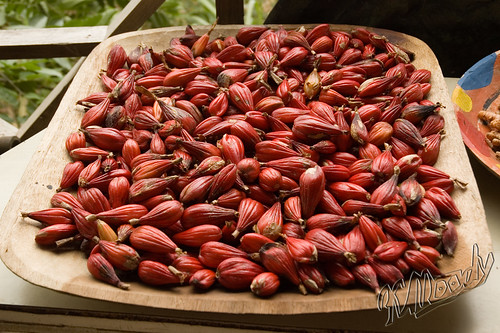
Roça São João dos Angolares, São Tomé
Sao Tome and Principe are a group of islands off the African coast of Gabon, formerly belonging to Portugal. The islands are remote, isolated, and brimming with unspoiled beauty. Palm-fringed beaches, virgin forests, and rugged landscapes decorate these islands that were formed long ago by once-active volcanoes.
Sao Tome and Principe consists of two main islands, as well as a group of smaller islands. Sao Tome is the larger and more populous of the two main islands. Principe is the other main island. Both Sao Tome and Principe are rich in scenic beauty, offering high mountains forested with dense tropical vegetation and inland waterfalls that drop into rainforests and cascade into rivers and streams.
Sao Tome has an area of 330 square miles and is inhabited by descendants of Portuguese colonists and Africans from Gabon, Cape Verde, Mozambique and Angola. The people primarily farm yams, cassava, and bananas. Plantations growing cacao also dominate the islands. Principe is much smaller at just over 40 square miles. It is located about 90 miles northeast of Sao Tome.
Attractions
Sao Tome and Principe’s main attraction is its natural features. The islands have some of the clearest waters in Africa that are ideal for scuba diving, snorkeling, and swimming. There are beaches that are stunningly white as well as beaches that consist of black sands. The lagoons such as the Lagoa Azul are great for snorkeling. Hotels and resorts line the beaches. There is also a tourist resort on the tiny island of Bom Bom or (Ilheu Bom Bom).
If you enjoy fishing, you can take a deep-sea fishing trip to Bom Bom Island or hit the shores of Sao Joao dos Angolares, an ancient fishing town.
The islands’ rainforests, particularly on Sao Tome, provide excellent hiking and birdwatching. You can also trek up to the top of Pico de Principe, which stands at over 3,100 feet high on the small island of Principe. Or better yet, try Pico de Sao Tome, which rises to 6,800 feet on the island of Sao Tome.
Other natural attractions on the islands include the waterfalls near Pousada Boa Vista known as Cascada Sao Nicolau and the sea water fountain several feet high called the Boca de Inferno (Hell’s Mouth).
If you enjoy colonial architecture, check out the picturesque town of Sao Tome and the town of Santo Antonio on Principe. Both have distinctive colonial architecture that have been preserved. You’ll also find cocoa plantations dating back to the colonial era that can be toured by the public. At Sao Sebastiao, there is a fortress that hosts a museum exhibiting colonial art and religious artifacts.
History
Sao Tome and Principe were uninhabited when the Portuguese explorers discovered it in the 15th century. The Portuguese settled the islands and brought African slaves to work the sugarcane plantations they set up. When sugar declined in importance, the islands were used as a slave station for transporting slaves to the Americas. Cacao and coffee were reintroduced in the 19th century when slavery was abolished and have remained the chief export products of the islands today.
In 1975, Sao Tome and Principe gained independence from Portugal. In 1991, the country embraced democratic reform and is today one of the more politically stable of the African nations.


Comments